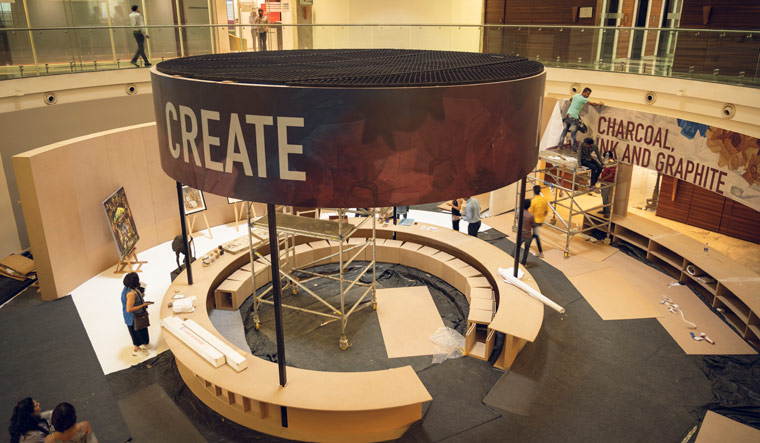A rather different kind of exhibition will begin from Sunday at Piramal Museum of Art, Lower Parel, Mumbai, and will go on for the next three months, until June 15.
Called Making Art: Materials and Technology, this interactive exhibition is being curated by Vaishnavi Ramanathan, curator and art historian, Piramal Museum of Art, and Ashvin E. Rajagopalan, director, Piramal Museum of Art. The exhibition aims at showing visitors how creating art is an exercise where the world of materials meets the world of ideas.
The exhibition will show how different materials have been used by artists in their works. Visitors will also get a chance to create their own work with the help of materials provided there. The exhibition will mainly focus on six materials—charcoal, ink and graphite, paints and pigments, sculpture, printmaking and photography, and digital media.
The exhibition will show art aficionados how materials grow in importance and became the primary choice of various artists who use them for creating valuable works of art. More importantly, it will show how the artists visualise materials differently and handle them adeptly, thereby pushing all boundaries to create beautiful works of art.
The museum is open to all, and you will also find gallery guides in Marathi and tours in Marathi and Hindi, apart from English. This is to ensure that anyone who walks in from any strata of society feels connected, explains Ramanathan.
Rajagopalan, who pointed out that getting visitors for museums in India is a massive challenge because of lack of infrastructure as well as lack of art education, said this interactive exhibition aims to increase “the audiences’ knowledge,” and make them “more courageous to enter an art space.” He added that some innovating means have been employed for the purpose.
Take for instance, the central workshop area where both artists and visitors can sit and work, and where all the workshops will happen. “If they are talking about charcoal, people can actually work with charcoal in the workshop area and try their hand at it,” says Ramanathan. “If you want to learn about using water colour, at least you should know what happens when you put pigment in water, on paper, how does it spread, how does it feel, what does a brush feel like, what do oil paints feel like, the tactility, the process. After that, if you go see a Husain oil painting, then you can say 'wow' and appreciate why he is so good,” explains Rajagopalan.
That is not all. At this exhibition, they are also extending art, working with a chef who is going to make different coloured sauces, different fruit flavours, savouries, and present them on edible paper. “You come, mix your food colours, and then you come and make art and eat art—edible art. It is a colour lesson, understanding the mixing of colours,” he says.
From Ranbir Kaleka, who uses photoshop with the sensitivity of an artist, enhancing the final product with painting on canvas, thus marrying digital media and painting together, to Ravi Varma’s two litho-stones, which were used to produce two different colours for a print, Navjyot Altav’s fiberglass work, showing us how fiberglass, a relatively inexpensive yet solid and long-lasting material, can produce an almost deceptive visual effect thereby allowing an artist to create whatever they wish with it, Krishen Kana’s famous Bandwala charcoal sketch, depicting how the Bandwalas, may be colourful on the outside but are really very sad on the inside, to Velu Vishwanathan’s work, depicting a Parisian influence combined with his upbringing in Kerala, the exhibition offers plethora in terms of variety.
“We want people to experience the joy of making, that is the basic takeaway and we hope that after the end of the exhibition they will go and indulge in creative exercises, however amateur it is. It needn’t only be visual, it can be music, theatre, whatever. (The idea) is to find that side of themselves,” says Ramanathan.
“Hopefully, 10-15 years from now, I have a grown-up audience who, by this show, knows more about art, who comes back to the programme, because a museum anyway is a long-term engagement. My agenda is not just getting an art audience, it is in changing lives,” says Rajagopalan.



